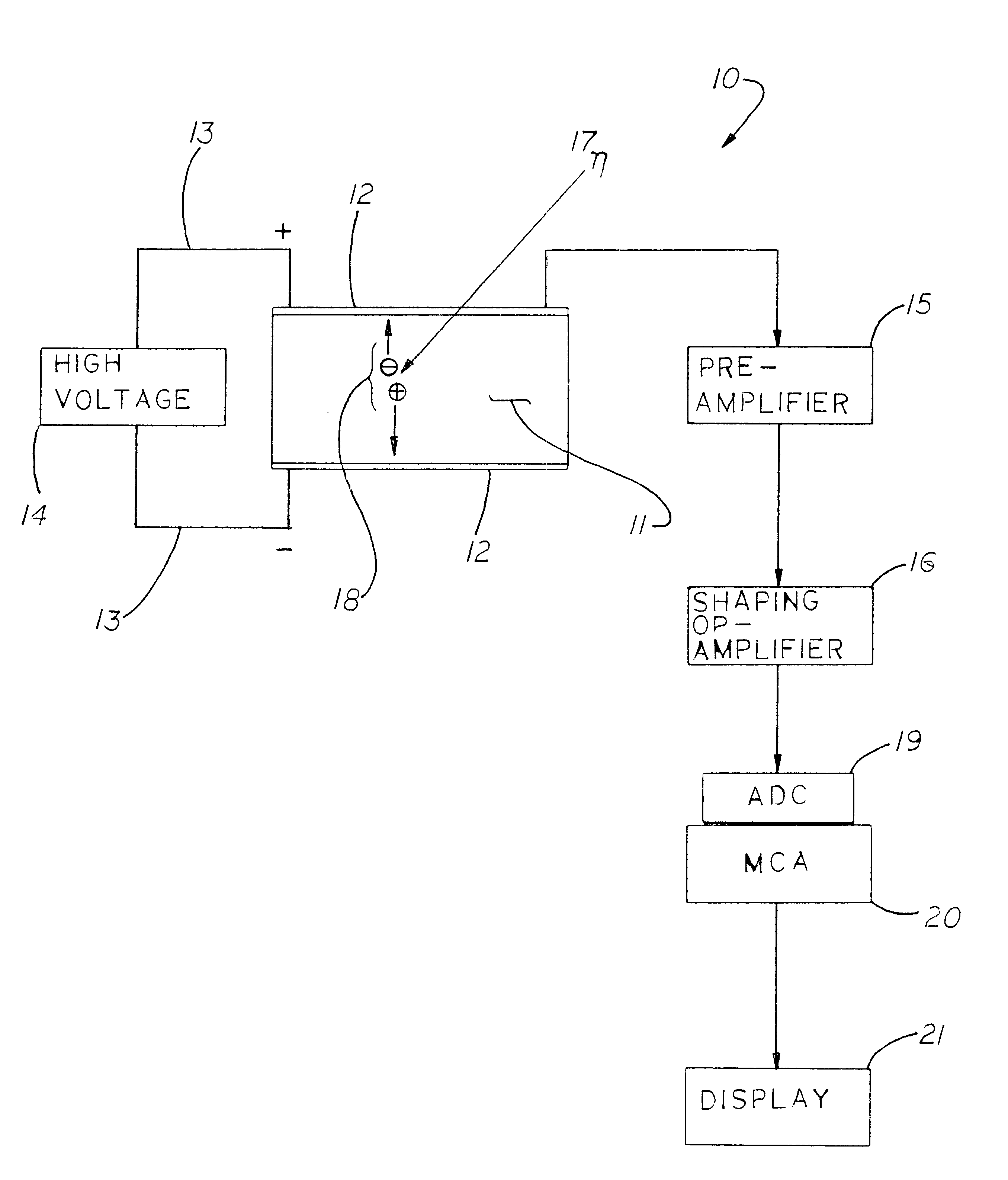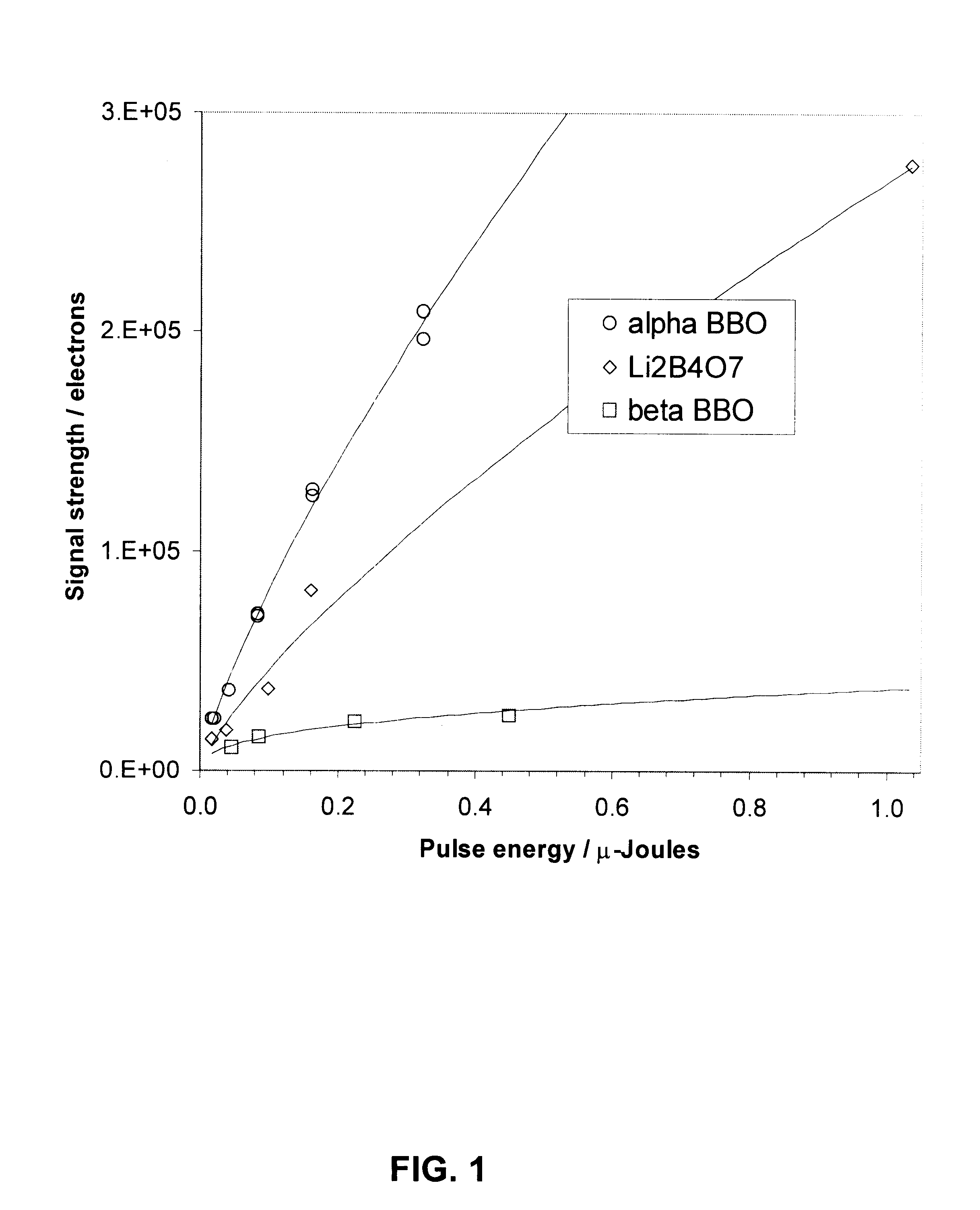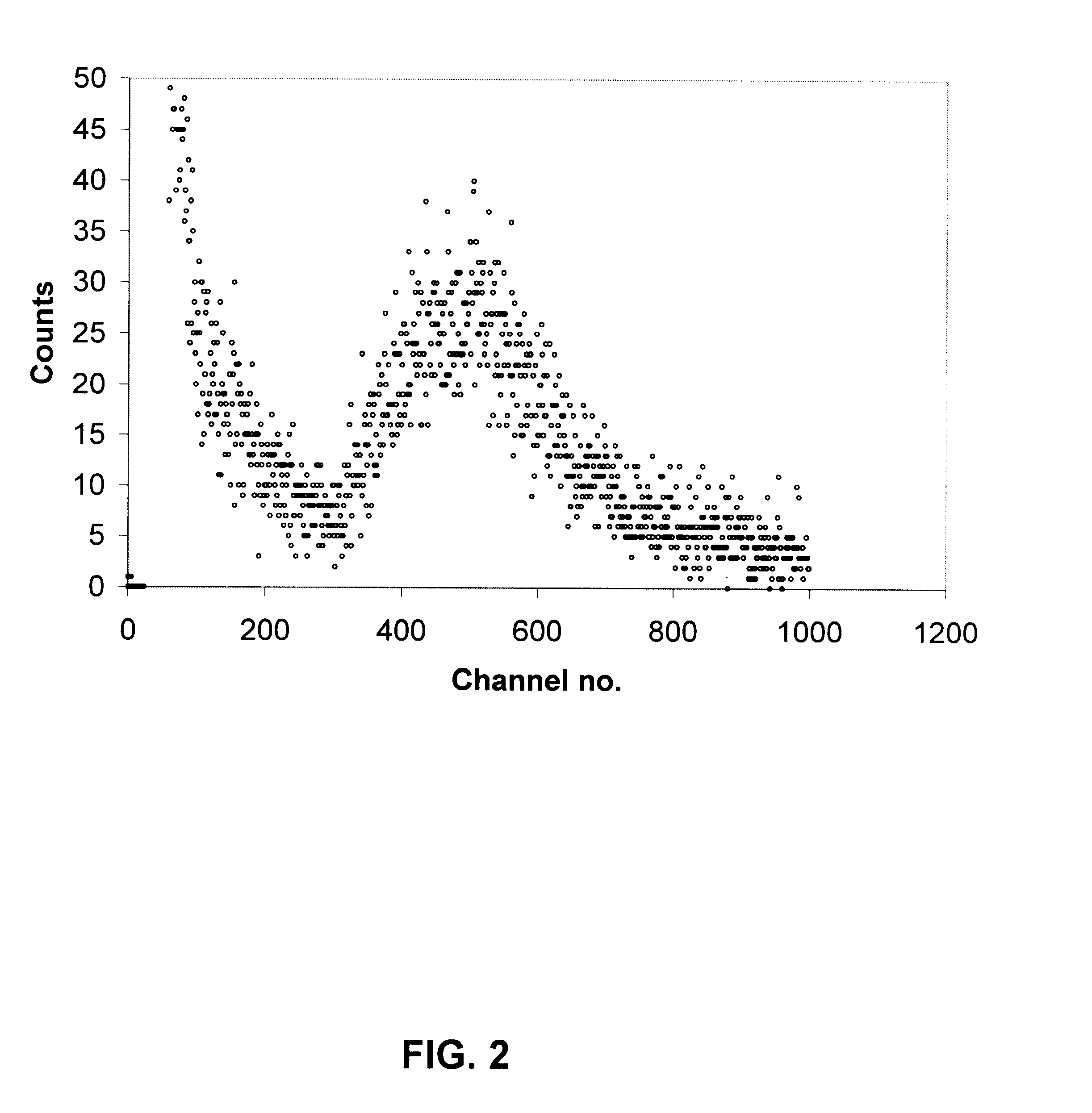Solid state neutron detector and method for use
- Summary
- Abstract
- Description
- Claims
- Application Information
AI Technical Summary
Benefits of technology
Problems solved by technology
Method used
Image
Examples
Embodiment Construction
Detectors & Detector Array
Applicants herein disclose a new use for known borate compositions: specifically, crystals of lithium tetraborate or alpha-barium borate, which have been grown from the melt without the use of a flux, are observed to provide a discernable signal response in the presence of a pulsed beam of thermal neutron radiation. As noted above the current technology for detecting thermal neutrons relies upon bulky and expensive helium gas filled tubes. The present invention, however, discloses the use of a solid, crystalline material composed of a high concentration of elements having a substantial neutron capture cross-section. A detector based on the crystals of the present invention, therefore, will offer many advantages over the current state-of-the-art. In particular, a detector array based on lithium borate or barium borate crystals could be fabricated into nearly any shape or size. Applicants contemplate individual detectors or a detector array comprising a numbe...
PUM
 Login to View More
Login to View More Abstract
Description
Claims
Application Information
 Login to View More
Login to View More - R&D
- Intellectual Property
- Life Sciences
- Materials
- Tech Scout
- Unparalleled Data Quality
- Higher Quality Content
- 60% Fewer Hallucinations
Browse by: Latest US Patents, China's latest patents, Technical Efficacy Thesaurus, Application Domain, Technology Topic, Popular Technical Reports.
© 2025 PatSnap. All rights reserved.Legal|Privacy policy|Modern Slavery Act Transparency Statement|Sitemap|About US| Contact US: help@patsnap.com



